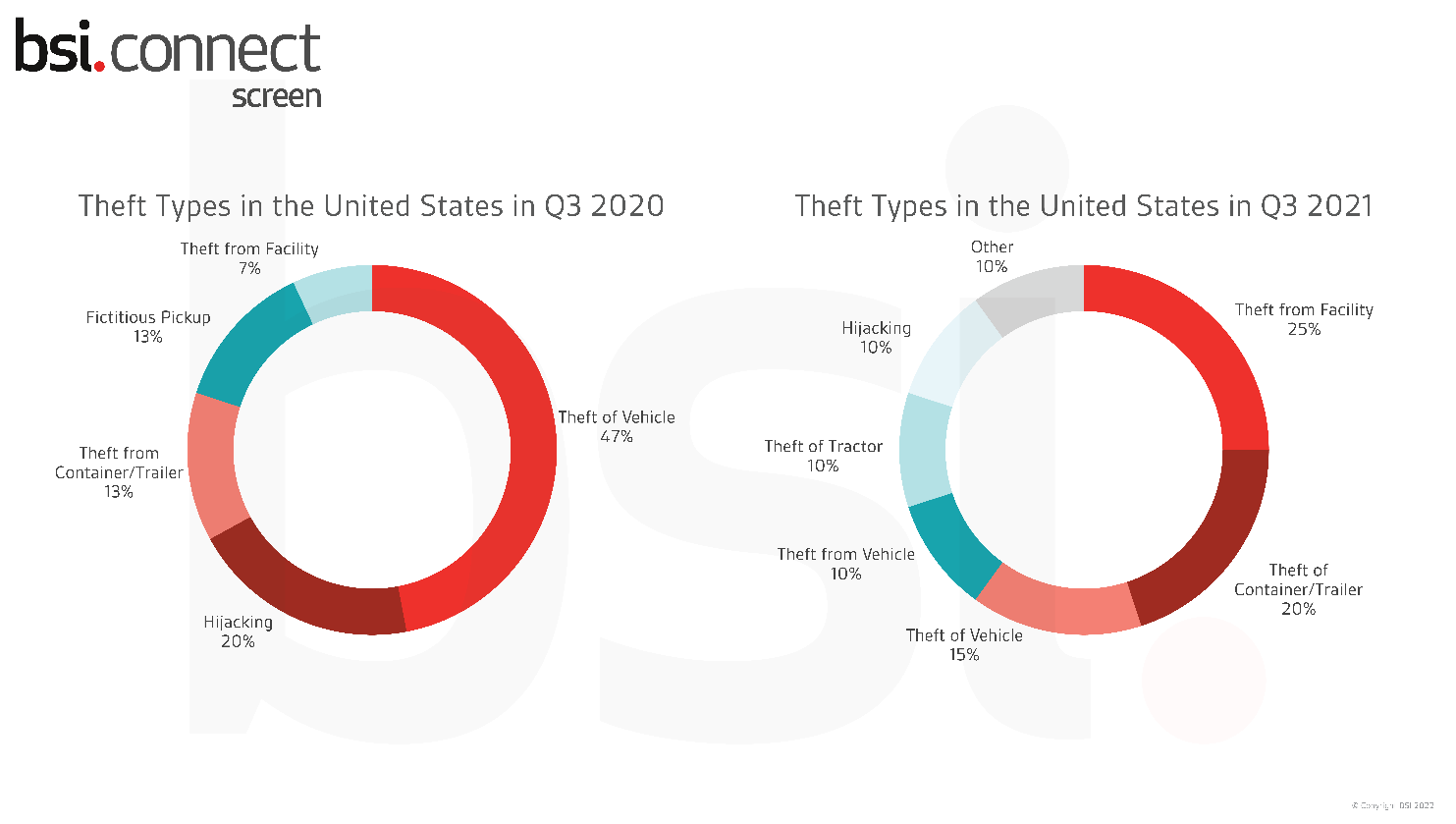TT Club and BSI inform that third quarter cargo theft data in the US shows storage facilities targeted in 45% of reported cases, up from 20% of recorded cases in the same quarter in 2020.
Fall in hijacking and robbery of vehicles from 67% to just 25% this year is also coincidental with rise in theft of cargo units in unsecured storage areas.
Congestion throughout the supply chain but particularly in and around ports is a significant contributory factor to this diversification of theft types
The changes in theft patterns from the same quarter last year highlight a trend away from ‘on the move’ targets to those locations where cargo is temporarily stored and delivered.
These locations include traditional warehouses and depots where containers and trailers are being held awaiting collection, many of which are temporary facilities in port areas without adequate security regimes.
More specifically, the largest rise in the methods and locations for cargo theft was from facilities, as the percentage of the total increased to 25% in the third quarter this year in contrast with just 7% in 2020.

At the other extreme theft of vehicles fell from a dominant 47% in 2020 to a surprisingly low 15%; in addition, hijackings halved from 20% to 10%.
In commenting on some of the more contrasting figures, Mike Yarwood, TT Club’s Managing Director, Loss Prevention said that “there is little doubt that the problems of supply chain disruption that are currently bedevilling the US freight transport system, particularly that of container congestion at ports and inland hubs, is creating increased opportunities for thieves.”
The static nature of cargo in these circumstances, often stored in temporary and less secure facilities, leads to criminal ingenuity adapting the modus operandi of theft in a typically resourceful way
Those concerned with risk management in the supply chain both in the US and throughout the world should be aware of such patterns and hopefully take measures to reduce losses, costs and insurance claims.
Finally, Mr. Yarwood explained that whatever the location and means of cargo theft such incidents can often be averted through straightforward due diligence, management processes and employee vetting and training.






























































